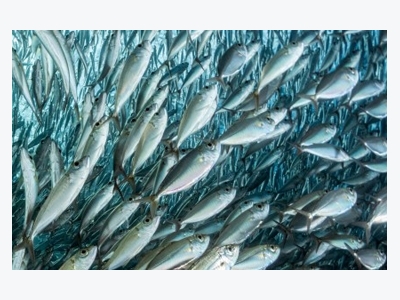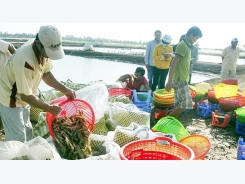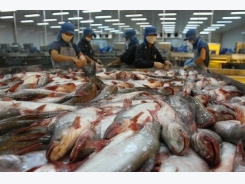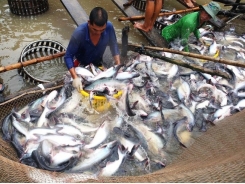Antibiotic resistance gene fears in fishmeal unfounded, says IFFO

Antibiotic resistance in fish farms is passed on from fishmeal, claims an article in the 7 September, 2017 edition of The Economist.
The article reports on a paper published in “Environmental Science and Technology,” which finds that the benthic sediment below fish farms harbors antibiotic-resistant bacteria.
Antibiotics may be used to prevent or cure disease in fish, but a group of scientists, led by Jing Wang of Dalian University of Technology in China, is suggesting that there is a potential for fishmeal used in aquaculture feed to be a vector for antibiotic-resistant genes.
Wang’s team looked at five fishmeal products and subjected each to a detailed genetic analysis. The study found 132 drug-resistance genes, which suggests that antibiotics had been used on the fish that were later transformed into fishmeal.
The fishmeal sample with the highest concentration of residual antibiotics was from Russia. It contained 54 nanograms of antibiotics per gram of food, and eight resistance genes. A sample from Peru had 16 nanograms of antibiotics per gram of food, and 41 resistance genes.
Further studies mixed resistance genes from Peruvian fishmeal with bacteria-rich sediments in laboratory conditions to ascertain if the resistance traits would transfer. Over 50 days, the number of resistance genes in the sediment increased tenfold, compared to no increase in a control sample.
Wang found his results worrying, but suggested that one solution might be to destroy the DNA in fishmeal with heat and chemicals before use.
IFFO, the marine ingredients organization, was quick to respond to the article with a letter to the Economist and a position paper published on its website, warning of the dangers of misreporting science.
It criticized the use of sweeping generalizations based on a very small sample size, along with the authors’ eagerness to attack the fish-farming and fishmeal industry.
“This has unfortunately caused a lack of perspective and critical appraisal of the facts,” IFFO said.
Its position paper points out that all the fishmeal samples were purchased in China, with no guarantee of country of origin integrity, and that reports of adulteration of imported fishmeal are common in that country. IFFO is now seeking clarification of the measures taken to protect samples from contamination.
The organization agrees that antibiotic resistance is a concern, and that findings in the paper by Wang and his colleagues need further investigation.
In particular, the presence of antibiotics in fishmeal made from wild fish that would not have come into any contact with antibiotics was worrying, according to IFFO. The majority of fishmeal is made from small species of wild-caught fish not suitable for human consumption, with around 33 percent coming from trimmings, offcuts, and byproducts from wild fish processing. A small portion of byproducts comes from farmed fish and could conceivably have had some contact with antibiotics. However, IFFO points out that their use is strictly controlled and, as fish health management and vaccines improve, is reducing over time, with some farming areas now antibiotic-free for many years.
A joint FAO/OIE/WHO “Expert Consultation on Antimicrobial Use in Aquaculture” in countries where “licensing and regulation of the use of antimicrobials are strictly enforced and where use is always under veterinary guidance,” found that that it would be typical that just two to four agents would be available to aquaculture, rather than the large numbers found by Wang.
IFFO also questioned why the antibiotics were not picked up by the quality management systems in place in aquafeed companies.
The organization noted that fish farms in China are generally sited close to human populations, and that sewage effluent may be a source of the contamination in the benthic sediment. In addition, China is a leader in polyculture systems, with large numbers of ducks reared within an aquaculture system. These factors could be a source of antibiotic residue.
IFFO also pointed out that antibiotic-resistant genes have been found in isolated locations around the world, including extreme environments such as permafrost and cave systems. This begs the question of whether they have become ubiquitous in the environment, according to the organization.
To write an opinion about the global fish farming industry, which produces as much as five million metric tons of seafood products per year, IFFO said it believes it is “unreasonable for The Economist author to extrapolate the results of a limited study, without providing additional information.”
Related news
Tools

Phối trộn thức ăn chăn nuôi

Pha dung dịch thủy canh

Định mức cho tôm ăn

Phối trộn phân bón NPK

Xác định tỷ lệ tôm sống

Chuyển đổi đơn vị phân bón

Xác định công suất sục khí

Chuyển đổi đơn vị tôm

Tính diện tích nhà kính

Tính thể tích ao




 Tra fish fair to take place this week…
Tra fish fair to take place this week…  No year-end surge in tra fish, shrimp exports…
No year-end surge in tra fish, shrimp exports…